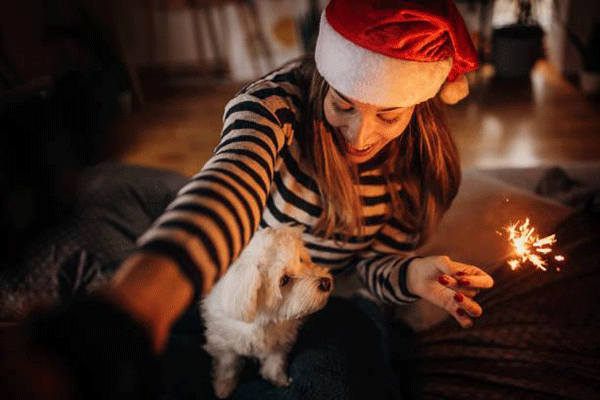As the New Year beckons with its promise of joyous celebrations and vibrant festivities, it is crucial to remember that amidst the revelry lies a potential peril for our furry friends—harmful fumes. The sights and sounds of jubilation can bring about a surge of hazards, from fireworks to party preparations, exposing our pets to fumes that pose significant risks to their well-being. Understanding these dangers and taking proactive steps to protect our pets is essential as we usher in a new year of joy and merriment.
Fumes… The seemingly innocuous scents wafting through our living spaces can pose grave risks to our furry friends. Pets, with their curious nature and close proximity to the ground, are particularly vulnerable to the harmful effects of fumes emanating from various sources, ranging from household cleaners to cooking appliances. Understanding the perilous implications and taking proactive measures to safeguard our pets from inhaling these fumes is crucial for their well-being and longevity.
As said in one of the researches conducted by veterinary experts in the Journals of the American Veterinary Medical Association (JAVMA), it has unveiled the perilous effects of fumes on pets, shedding light on the diverse array of substances that can inflict harm. Household cleaning agents, often containing volatile organic compounds (VOCs) like ammonia and bleach, emit fumes that can trigger respiratory distress in pets. These chemicals, although effective in cleansing our living spaces, can irritate the sensitive respiratory systems of animals, leading to coughing, wheezing, and in severe cases, respiratory failure.

Fireworks, a hallmark of New Year’s celebrations, emit fumes that can distress our four-legged companions. The loud noises coupled with the acrid fumes can induce anxiety and panic in pets, leading to stress-related ailments and, in severe cases, fleeing behavior that endangers their safety.
Beyond fireworks, the preparations and ambiance of New Year’s gatherings can harbor hidden risks for our pets. Common celebratory items like party poppers, streamers, and even certain decorations release fumes that, when inhaled, can trigger respiratory issues in pets. The excitement and hustle of party planning often involve the use of aerosols, adhesives, and scented candles, all of which emit fumes that can be harmful to our animal companions.
Moreover, the kitchen—a haven for delectable culinary creations—can unknowingly transform into a hazardous zone for pets. Cooking appliances such as non-stick pans release toxic fumes when overheated, presenting a hidden threat to our four-legged companions. Health Canada, in one of their articles (Perfluorooctanoic Acid (PFOA) in Drinking Water), tells us that these fumes contain perfluorooctanoic acid (PFOA), which can induce adverse health effects, including respiratory issues and, in certain cases, fatal consequences in pets.
The consequences of inhaling fumes extend beyond respiratory distress. Studies have indicated that prolonged exposure to certain fumes can lead to chronic health issues in pets. Persistent inhalation of cigarette smoke, for instance, has been linked to an increased risk of cancer, respiratory infections, and skin ailments in dogs and cats. Similarly, the continuous inhalation of fumes from scented candles and air fresheners can trigger allergic reactions and exacerbate existing respiratory conditions in pets.

While the hazards of fumes on pets are apparent, mitigating these risks requires a concerted effort from pet owners. Simple yet effective measures can significantly reduce the exposure of our furry companions to harmful fumes. Ventilation plays a pivotal role in diluting indoor air pollutants. Ensuring proper airflow by opening windows and using exhaust fans can help dissipate fumes, curbing their concentration and subsequent impact on pets.
Choosing pet-friendly cleaning products devoid of harsh chemicals is another proactive step towards safeguarding our pets. Products labeled as pet-safe or utilizing natural ingredients reduce the risk of exposing animals to harmful fumes while maintaining a clean environment. Additionally, storing cleaning agents in secure, inaccessible locations prevents accidental ingestion or inhalation by pets, further fortifying their safety.
Awareness and vigilance are paramount in protecting our pets from the perils of fumes. Understanding the potential sources of hazardous fumes and their detrimental effects enables pet owners to preemptively take action. Educating oneself about the toxicity of certain substances and their impact on pets empowers individuals to make informed decisions when selecting household products and designing pet-friendly living spaces.
The journey toward pet safety involves not only mitigating current risks but also advocating for broader awareness and change. Pet advocacy groups such as Save Animals of Love and Light-Save ALL and others alike as well as veterinary organizations play a crucial role in disseminating information about the dangers of fumes on pets. Collaborative efforts with manufacturers to develop safer products and stringent regulations regarding labeling of pet-safe products can pave the way for a safer environment for our furry companions.
As responsible stewards of our pets’ well-being, it is incumbent upon us to create an environment that fosters their health and happiness. By acknowledging the dangers of fumes and implementing preventive measures, we can shield our beloved companions from the silent but potent threats lurking within our homes. Together, through education, awareness, and proactive measures, we can ensure a safer and healthier living environment for our furry friends, enriching their lives with the safety and love they deserve.
About the Author: Mariana Burgos is a freelance artist. She has been a solo parent for 16 years now because she is wife to a desaparecido. She and her daughter are animal lovers and are active in advocating not only human rights but the rights of animals as well.





